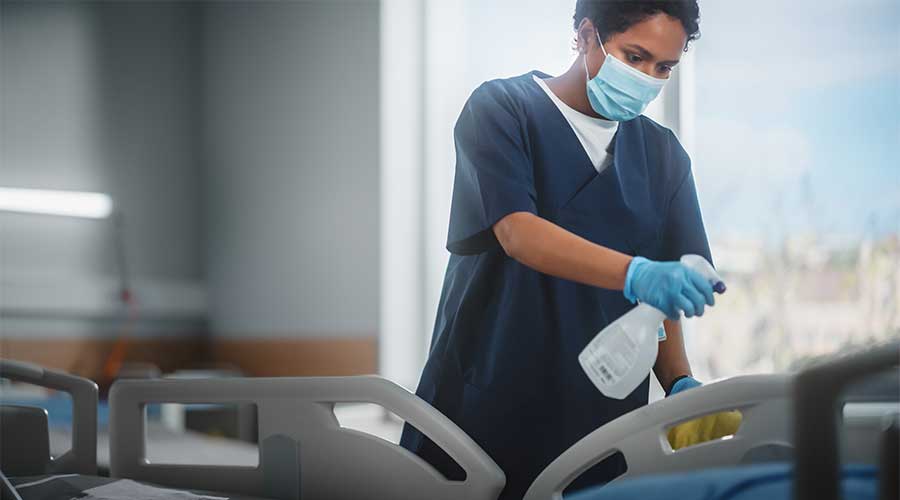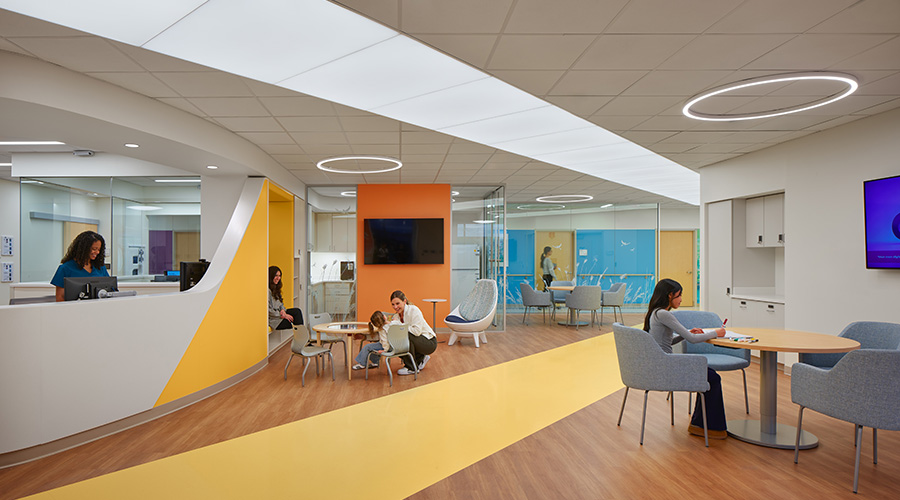Proper cleaning and disinfection procedures play a critical role against the spread of Clostridioides difficile (C diff), according to a recent study. Most healthcare facilities have practices in place to clean and disinfect shared surfaces to prevent the spread of healthcare-associated infections (HAIs).
Regardless, a 2021 analysis by the U.S. Centers for Disease Control & Prevention (CDC) reported that after years of steady reductions in HAIs prior to the pandemic, U.S. hospitals saw significantly higher rates for four out of six types of HAIs in 2020, many of which are resistant to antibiotics.
C diff bacteria spores are especially difficult to kill and require deactivation by sporicides, which can be hard on hospital surfaces, equipment and devices. The goal of the study was to gauge the impact of combining consistent use of sporicidal disinfectants with comprehensive training, evidence-based processes, and actionable cleaning data.
Spotlight on training
The study, “Mitigating hospital-onset Clostridioides difficile: The impact of an optimized environmental hygiene program in eight hospitals,” was published by Cambridge University Press. It was comprised of eight acute-care hospitals ranging in size and geographic regions and nine randomly selected hospitals that had not enrolled in the standardized system environmental services (EVS) intervention, which served as the control group.
Before the study, none had implemented disinfection cleaning thoroughness monitoring and optimization per CDC level II recommendations. After an initial monitoring period, all EVS personnel completed a standardized educational curriculum comprised of classroom and hands-on training.
The study demonstrated that alongside structured policies and procedures for daily and terminal cleaning and disinfection of facilities, launching a comprehensive training program is an essential component of an environmental hygiene program. Key messaging in the training is to ensure employees responsible for cleaning and disinfection understand the direct impact they have on reducing the transmission of infections.
The standardization of policies and procedures also avoided miscommunication and inconsistencies among EVS personnel. It is recommended that such policies and procedures be based on the Association for the Health Care Environment’s (AHE) Practice Guidance for Health Care Environmental Cleaning.
Cleaning performance
As important as it is to have consistent training when initiating an environmental hygiene program, it is just as important to develop performance criteria to assess its benefit. A review of data throughout the Cambridge study revealed the critical role of the daily use of disinfectants and the monitoring and optimization of EVS personnel practices per CDC level II recommendations. Data was collected regarding the thoroughness of disinfection cleaning as defined by the proportion of adequately cleaned objects in a room, compared to the number of objects recommended to be cleaned by policy, and expressed as a percentage.
Cleanliness was monitored by all study sites using a standardized fluorescent marking system that is not easily visible to the EVS staff, and it provided a valuable mechanism to validate cleanliness and relay feedback to EVS personnel. Cleaning validation data also demonstrated the efficacy of a sporicidal disinfectant for use in all inpatient areas, not just those that housed a patient with known acute C diff infection.
The data collected throughout the Cambridge study builds on prior research that had demonstrated the vital role that surface disinfection plays in reducing cross transmission of pathogens in healthcare settings. The study strongly demonstrates the efficacy of an environmental hygiene program that emphasizes the value of EVS personnel who are tasked everyday with providing a safe, clean environment for patients, healthcare workers and visitors while remaining in line with several elements of the CDC’s Core Components of Environmental Cleaning and Disinfection.
This study broadcast the benefits of ongoing involvement with EVS and infection preventionists to tailor site-specific programs that use standardized products tailored to their setting, enhanced cleaning and disinfection protocols and the use of impartial ongoing performance monitoring to optimize practices.
Shari L. Solomon, Esq., is president and founder of CleanHealth Environmental, LLC. CleanHealth provides infection prevention and industrial hygiene training and consulting services geared toward facility personnel and vendors responsible for infection prevention, cleaning and disinfection, and facility operations and maintenance practices. Solomon has more than 20 years of environmental consulting and federal regulatory experience. An attorney by trade, combined with her experience in the industrial hygiene field with a focus on healthcare, Solomon holds a unique expertise and understanding of liability prevention techniques, offering clients practical and valuable risk management solutions.

 Contaminants Under Foot: A Closer Look at Patient Room Floors
Contaminants Under Foot: A Closer Look at Patient Room Floors Power Outages Largely Driven by Extreme Weather Events
Power Outages Largely Driven by Extreme Weather Events Nemours Children's Health Opens New Moseley Foundation Institute Hospital
Nemours Children's Health Opens New Moseley Foundation Institute Hospital Code Compliance Isn't Enough for Healthcare Resilience
Code Compliance Isn't Enough for Healthcare Resilience Ribbon Cutting Marks First Phase Completion for New Montefiore Einstein Facility
Ribbon Cutting Marks First Phase Completion for New Montefiore Einstein Facility